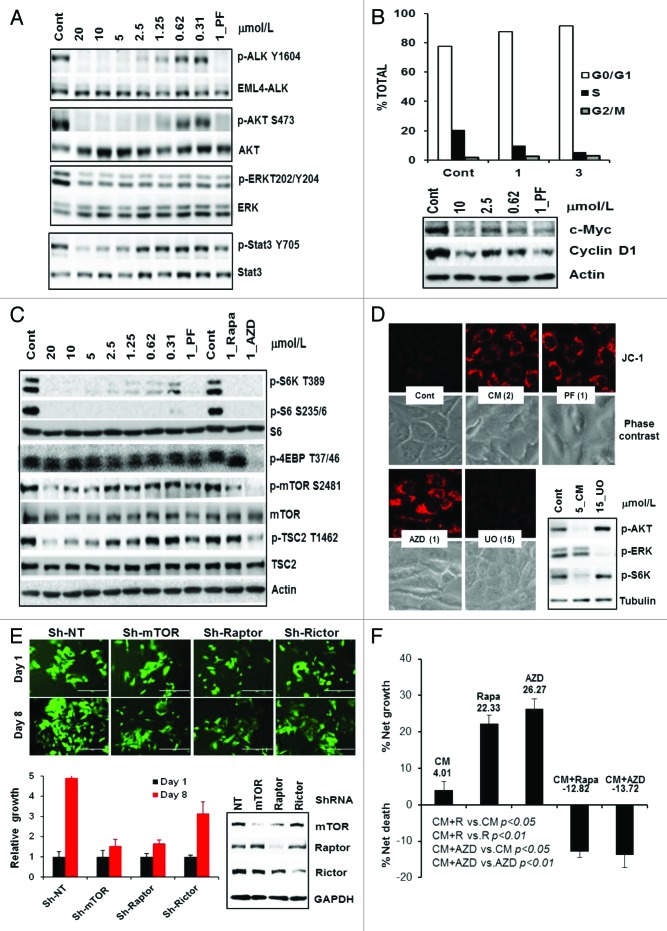Figure 5. CM-118 inhibits EML4-ALK signaling, survival, and its mechanism in H2228 cells. (A) H2228 cells were treated for 6 h with various doses of CM-118, 1 μmol/L PF-02341066 (PF), then immunoblotted. (B) H2228 cells were treated with the indicated CM-118 for 48 h, subjected to cell cycle analysis (top) and immunoblotting (bottom). (C) H2228 cells were treated for 24 h with the indicated CM-118, 1 μmol/L PF, rapamycin (Rapa), or AZD8055 (AZD), then immunoblotted. (D) H2228 cells were treated with the indicated inhibitors for 24 h, then stained with JC-1 and photographed as described in Methods. (E) H2228 cells were infected with GIPZ ShRNA lentivirus encoding non-targeting (NT), mTOR (Sh#2), Raptor (Sh#2), and Rictor (Sh#4). GFP-expressing (Sh-positive) viable cells were counted on day 1 and day 8 (day 6 and 14 post infection) (top) and quantified (bottom left). Puromycin-selected cells were immunoblotted (bottom right). (F) H2228 cells were treated for 3 d with 3 μmol/L CM-118, 0.1 μmol/L rapamycin (Rapa), or 0.1 μmol/L AZD8055 (AZD), then assessed for viability via trypan-blue cell counting. Results are processed similarly as in Figure 4A.

An official website of the United States government
Here's how you know
Official websites use .gov
A
.gov website belongs to an official
government organization in the United States.
Secure .gov websites use HTTPS
A lock (
) or https:// means you've safely
connected to the .gov website. Share sensitive
information only on official, secure websites.
